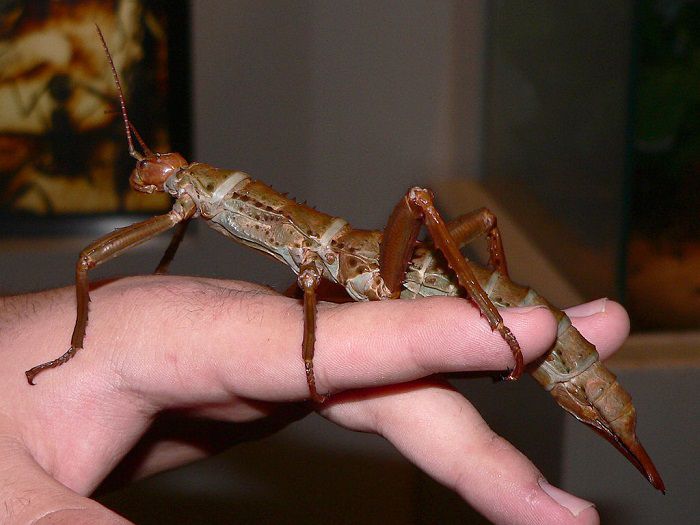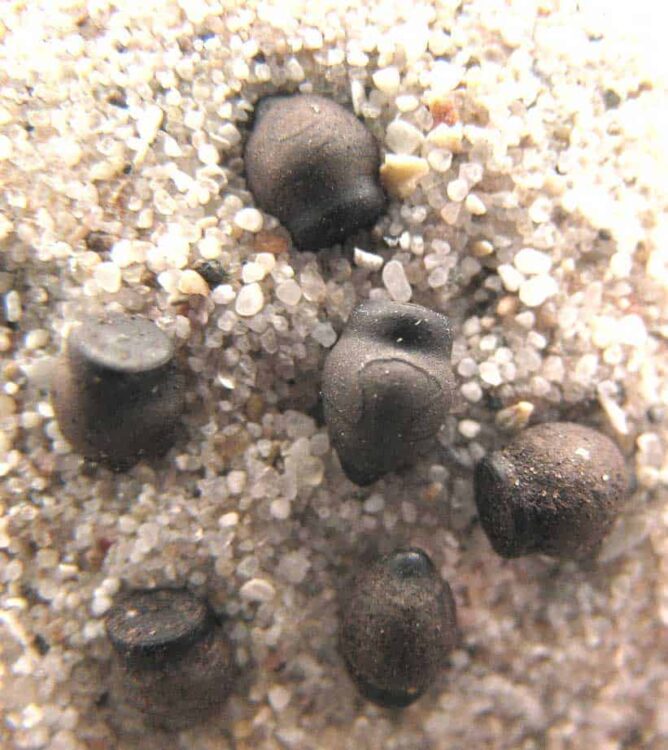Table of Contents
People buy stick insects for a variety of reasons. Some just want to have these fascinating creatures as pets while others want to breed them and then sell the resulting eggs to make some extra money. Regardless of whether you buy a stick insect as a pet or for breeding purposes, you may be interested to know more about the question of ‘when do stick insects lay their eggs’.
Stick insects progress through various stages of maturity before reaching adulthood. Nymphs will shed their skin several times in the few months preceding adulthood. They grow a little more with each shedding before finally reaching maturity and full adulthood. They stop growing at this point and will no longer moult. This is also when they will begin laying eggs.
For more advice and information on keeping and looking after stick insects, check out my ebook on Amazon click here
(opens in a new tab).

How do Stick Insects Breed?
The majority of stick insects are parthenogenic , which means it is not necessary for a female and a male to mate in order for young to be reproduced. In fact, many female stick insects will lay eggs
, which means it is not necessary for a female and a male to mate in order for young to be reproduced. In fact, many female stick insects will lay eggs even if they have never been around a male of the species.
even if they have never been around a male of the species.
However, what you do need to know is that eggs produced without a male will always result in female nymphs that are clones of their mothers. This makes it amazingly easy to ‘breed’ stick insects. But because stick insects are capable of laying around two to three eggs every day of their adult lives, it can also mean that there is the possibility of them having hundreds of offspring throughout the course of their very short lifespans.
Stick insects tend to go through various stages of maturity before reaching adulthood. The nymphs will shed their skins around five to nine times in the few months before they become adults. Each time they shed their skins, they will grow a little bit more before finally reaching maturity and full adulthood . At this point, they will stop growing and will no longer shed their skin. This is also when they will begin laying eggs.
. At this point, they will stop growing and will no longer shed their skin. This is also when they will begin laying eggs.
What to Do with Stick Insect Eggs?
If you are breeding stick insects or are just interested in seeing your pet’s eggs hatch, you will need to know a bit more about what the eggs look like and what you need to do with them until the nymphs hatch.
and what you need to do with them until the nymphs hatch.
Stick insect eggs typically resemble seeds and are typically a brown colour. They range in size depending on the species of stick insect that you have. If you own a common Indian stick insect , the eggs will be around 2mm and will resemble round seeds. They are dark brown in colour.
, the eggs will be around 2mm and will resemble round seeds. They are dark brown in colour.
When you see the eggs on the floor of the container, it is a good idea to remove them carefully with a pair of tweezers and place them in a separate container if you are planning to let them hatch. If you do not want to keep the eggs, you can pass them on to someone who wants them, sell them, or dispose of them. If you are going to dispose of the stick insect eggs , you will need to freeze them first. This is the most humane way of killing the developing nymph as it is both quick and painless.
, you will need to freeze them first. This is the most humane way of killing the developing nymph as it is both quick and painless.
Although the eggs can be left in the adult tank, it is easier if you move them to another container until the nymphs hatch. Eggs do require more moisture than adult stick insects , so you will need to ensure that the container is sprayed regularly while at the same time making sure that mould does not grow.
, so you will need to ensure that the container is sprayed regularly while at the same time making sure that mould does not grow.
The temperature of the container should not exceed 30C. Generally speaking a temperature in the mid-twenties is optimum for developing eggs. The container you place the eggs in should be secure to prevent nymphs from escaping when they hatch, but it should also be well ventilated.
You can place tissue paper on the bottom of the container and sit the eggs on top of this. They will thrive provided the temperature and humidity levels are correct. If the temperature is too high or too low, the eggs may not hatch. Typically, the eggs take anywhere between two and four months to hatch. This will depend on the type of stick insect that you have.
It is important to keep an eye on the eggs because once the nymphs have hatched, they will need to be moved to another container where they can feed on fresh leaves. Nymphs can find it difficult to eat undamaged leaves though, so unless there are older stick insects in the same tank, you will need to tear or cut the leaves to allow them to feed.
Taking Care of Stick Insects
If you have never owned a stick insect before, you may be thinking about purchasing eggs from a pet store or online. If so, you will need to know how to take care of the nymphs once they hatch.
It is crucial to have adequate housing for the stick insects that will accommodate the number of sticks you plan to have without overcrowding. If you have too many stick insects in one container, there is the risk of a proliferation of illness or disease or they could get hurt or suffer lost limbs.
that will accommodate the number of sticks you plan to have without overcrowding. If you have too many stick insects in one container, there is the risk of a proliferation of illness or disease or they could get hurt or suffer lost limbs.
The height of the tank is also an important consideration. You have to ensure that the stick insects have enough height for shedding their skins; the recommended height is three times the length of a full-grown adult. You can purchase tanks online or from a pet store and they will usually have a mesh screen at the top from which your sticks can hang when moulting. The mesh screen will also provide adequate ventilation for the creatures.
Within the tank, you can place decorations such as branches and twigs that your sticks will use for climbing and resting. You should also place fresh leaves in the tank from which the sticks can feed.

What Do Stick Insects Eat
Stick insects survive on a diet of fresh green leaves and tend to prefer leaves from plants such as bramble, ivy, privet, rose, hawthorn, hazel, and oak. You can collect leaves from nearby parks or woodlands, wash them thoroughly, and place them in the tank.
To keep leaves fresh for longer, place the stem of the leaves in a container of water, but make sure that this is covered if you have nymphs in the tank as there is a risk that they could fall into the water and drown.
Stick insects prefer darker green leaves rather than new bright green leaves. If you place leaves in the tank that they do not like, they will simply not eat – no matter how hungry they are. When collecting leaves for your stick insects , make sure to avoid areas near to busy roads as there is a risk that fumes from the cars can linger on the leaves, which can be harmful to them. If you have no other option in terms of collecting fresh leaves, be sure to wash any food that you place in the tank to remove as many chemicals as possible.
, make sure to avoid areas near to busy roads as there is a risk that fumes from the cars can linger on the leaves, which can be harmful to them. If you have no other option in terms of collecting fresh leaves, be sure to wash any food that you place in the tank to remove as many chemicals as possible.
Keeping Stick Insects as Pets
Stick insects can make great pets , particularly for children. You can purchase them as nymphs or as eggs and watch as they hatch. The great thing about stick insects is that there is little investment required and they are easy to care for. You can even go away for a weekend without worrying about getting someone in to feed them. All you need do is place fresh leaves in the tank before you go, and they will be fine until you get back.
, particularly for children. You can purchase them as nymphs or as eggs and watch as they hatch. The great thing about stick insects is that there is little investment required and they are easy to care for. You can even go away for a weekend without worrying about getting someone in to feed them. All you need do is place fresh leaves in the tank before you go, and they will be fine until you get back.
Children love to watch them grow and change, and the fact that they can see the full lifespan from egg to adult in a short space of time will keep them interested.

